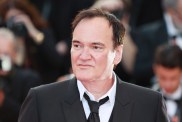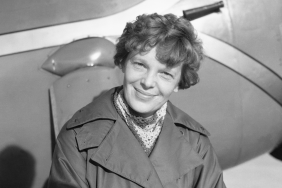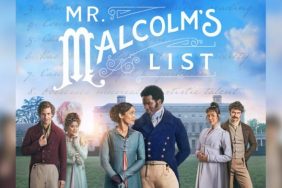Cast:
Hilary Swank as Amelia Earhart
Richard Gere as George Putnam
Ewan McGregor as Gene Vidal
Christopher Eccleston as Fred Noonan
Joe Anderson as Bill
Cherry Jones as Eleanor Roosevelt
Mia Wasikowska as Elinor Smith
Aaron Abrams as Slim Gordon
Dylan Roberts as Leo Bellarts
Scott Yaphe as William Dalten
Tom Fairfoot as Balfour
Ryann Shane as Young Amelia
William Cuddy as Gore Vidal
Elizabeth Shepherd as Frances Putnam
Richard Donat as Gallagher
Directed by Mira Nair
Summary:
By no means the perfect biopic, but one that covers a lot of ground in telling Amelia Earhart’s story. All of the important bits are there but also a few lesser-known facts that sometimes bog the movie down while trying to make her more interesting apart from her historical legacy.
Story:
After becoming the first woman to cross the Atlantic Ocean by plane, Amelia Earhart (Hilary Swank) strives to set new records for her gender as she becomes a household name and an icon in aviation for her achievements. At the same time, Amelia has been asked to be the wife of her P.R. agent George Putnam (Richard Gere), a marriage that inevitably hits a bump when Amelia becomes involved with the wealthy Gene Vidal (Ewan McGregor).
Analysis:
Sometime in the past few years, the biopic genre has become one easy to deride with cynicism, because in telling anyone’s story, regardless of the time period or the special skills that made them worthy of note, there’s always going to be a certain amount of cinematic license done to maintain the viewer’s interest, as well as a certain formula that’s expected of the oeuvre.
Most people will already know the most important facts that need to be known about Amelia Earhart because most of that is taught as early as elementary school, although the specific details of her two Transatlantic flights and failed trip around the world aren’t that well-known. We mostly know Earhart’s achievements as an early pioneer in aviation, but the movie balances that with her private life with P.R. agent George Putnam (Richard Gere), who took full advantage of his star’s fame to have her endorsing luggage and other products in order to keep the cash flowing in between flights.
The movie is essentially “Seabiscuit” with Hilary Swank replacing the horse, and comparisons could just as easily be made with Ron Howard’s “Cinderella Man.” In all three cases, they were about movies set during the Great Depression where someone came forward and stirred the American public’s imagination with their amazing deeds.
Swank is convincing enough as Earhart, although it’s not the best character or performance she’s given, her thick Midwest accent and cocky swagger often getting grating over time. By comparison, Richard Gere is generally flat and uninteresting, not really stretching much as her closest confidante and companion. As much as the film tries to make a strong feminist statement–thank heavens it was directed by a woman to drive that point home–Amelia’s relationship within a “man’s world” is probably the most mishandled aspect of the movie, as Nair tries to create the type of romance we might see in an old movie from the ’40s or ’50s. The time spent exploring Earthart’s romantic liaisons with Putnam and Ewan McGregor’s Gene Vidal, the latter playing a small part as “The Other Man” who interrupts their very public marriage, is where the film often stumbles.
Thankfully, we only get one or two moments where Earhart faces blatant sexism in the workplace, because it would have been way too easy to play that aspect of her life. That’s partially what makes the two men so important, because they’re both very supportive of everything Earhart wants to do, and yet, the love triangle does feel forced.
Then there are decisions about what to include and what to leave out, and the film documents many of Earhart’s finer moments like taking the First Lady Eleanor Roosevelt up for a flight and the friendly rivalry with the younger Elinor Smith. There’s also the decision to show Amelia with Gene Vidal’s very young (and later, much more famous) son Gore, but failing to mention Putnam’s older sons from a previous marriage, whom one presumes would have played a larger part in their lives.
Even so, the amount of research that went into covering every minute detail of Earthart’s life is fairly impressive, as is the way Nair is able to transition actual newsreel footage into the scenes she shot herself. Overall, the movie looks quite spectacular as Nair takes full advantage of the widescreen format to really show what it must have felt like for Earhart’s sole plane to be all alone up in the friendly skies, and they’re gorgeous scenes that perfectly personify the peace and tranquility of flying above the clouds.
The last hour of the movie is where it gets infinitely more interesting as it focuses on the preparations and pitfalls involved with Earhart’s failed around-the-world flight, accompanied only by Christopher Eccleston’s navigator Fred Noonan. Some might be surprised by the accuracy in the moments leading up to their failed landing and disappearance in the middle of the Pacific Ocean from the recorded radio logs. It’s not until this last act when Earhart and Putnam are separated by thousands of miles, where you finally understand how important he was to her, which helps end the film on a strong poignant note.










